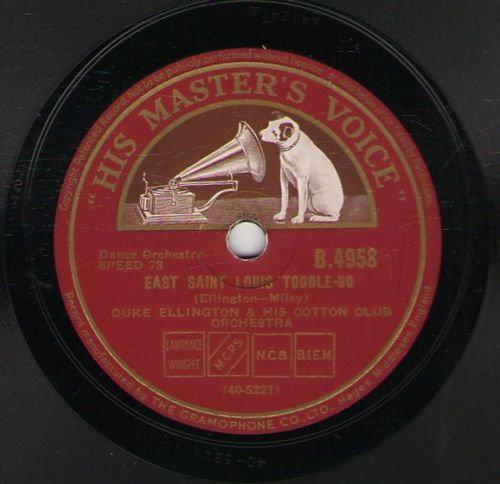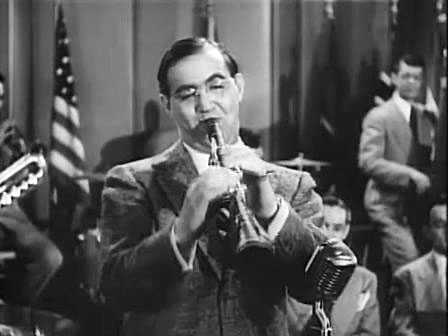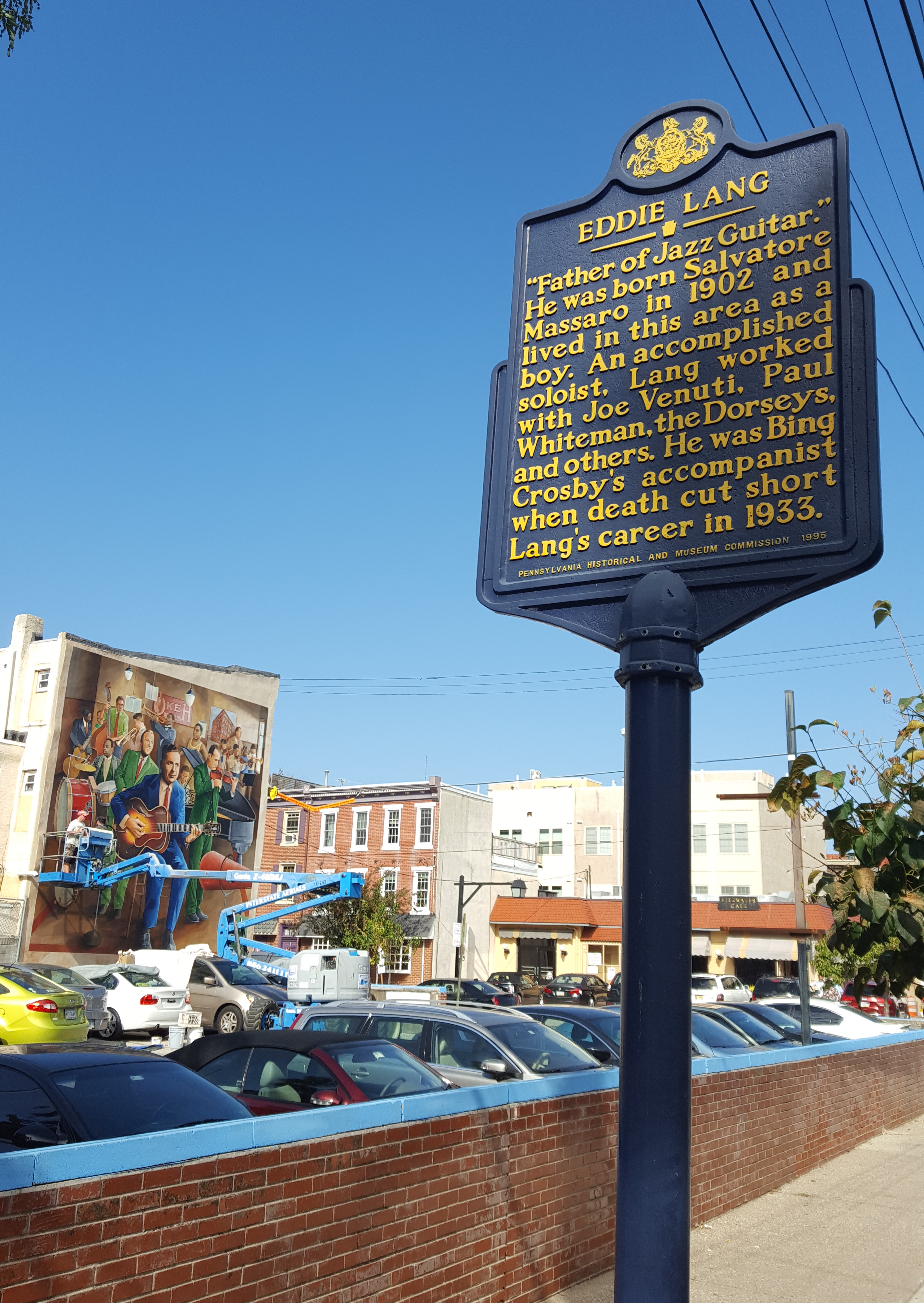|
After You've Gone (song)
"After You've Gone" is a 1918 popular song composed by Turner Layton with lyrics by Henry Creamer. History It was recorded by Marion Harris on July 22, 1918, and released by Victor Records. The song became so popular that the sheet music was later decorated with tiny photographs of the 45 men who made the song famous, including Paul Whiteman, Rudy Vallée, B.A. Rolfe, Guy Lombardo, and Louis Armstrong. Composition The chorus adheres to a standard ABAC pattern but is only 20 measures long. There are four 4-bar phrases, followed by a 4 measure tag. The song is harmonically active, with chord changes almost every measure. The opening four notes are identical to the opening notes of "Peg o' My Heart" (1912) — at the time songwriters often borrowed the first few notes of a hit melody. Notable recordings See also *List of pre-1920 jazz standards References External links "After You've Goneby Marion Harris, the original 1918 version at the Internet Archive"After You've G ... [...More Info...] [...Related Items...] OR: [Wikipedia] [Google] [Baidu] |
Turner Layton
Turner Layton (July 2, 1894 – February 6, 1978), born John Turner Layton, Jr., was an African American songwriter, singer and pianist. He frequently worked with Henry Creamer. Life Born in Washington, D.C., United States, in 1894, he was the son of John Turner Layton, "a bass singer, music educator and hymn composer."Peterson, Bernard L. ''Profiles of African American Stage Performers and Theatre People, 1816-1890)'', Greenwood Press, 2000, p. 164 After receiving a musical education from his father, he attended the Howard University Dental School, later coming to New York City in the early 1900s, where he met future songwriting partner, lyricist Henry Creamer. Layton is best known for his many compositions with Creamer, the best known of which is the standard " After You've Gone", written in 1918 and first popularized by Sophie Tucker. Turner and Creamer had another hit with Way Down Yonder in New Orleans in 1922. It was recorded in 1927 by Frank Trumbauer (with Bix Beider ... [...More Info...] [...Related Items...] OR: [Wikipedia] [Google] [Baidu] |
Red Nichols
Ernest Loring "Red" Nichols (May 8, 1905 – June 28, 1965) was an American jazz cornetist, composer, and jazz bandleader. Biography Early life and career Nichols was born in Ogden, Utah, United States. His father was a college music professor, and Nichols was something of a child prodigy, playing difficult set pieces for his father's brass band by the age of 12. Young Nichols heard the early recordings of the Original Dixieland Jazz Band and later those of Bix Beiderbecke, and these had a strong influence on him. His style became polished, clean, and incisive. In the early 1920s, Nichols moved to the Midwest and joined a band called the Syncopating Seven. When that band broke up, he joined the Johnny Johnson Orchestra and went with it to New York City in 1923. In New York, he met trombonist Miff Mole, and the two were inseparable for the next decade. Before signing with Brunswick, Nichols and Mole recorded for Pathé-Perfect under the name the Red Heads. Brunswick Record ... [...More Info...] [...Related Items...] OR: [Wikipedia] [Google] [Baidu] |
Lionel Hampton
Lionel Leo Hampton (April 20, 1908 – August 31, 2002) was an American jazz vibraphonist, pianist, percussionist, and bandleader. Hampton worked with jazz musicians from Teddy Wilson, Benny Goodman, and Buddy Rich, to Charlie Parker, Charles Mingus, and Quincy Jones. In 1992, he was inducted into the Alabama Jazz Hall of Fame, and he was awarded the National Medal of Arts in 1996. Biography Early life Lionel Hampton was born in 1908 in Louisville, Kentucky, and was raised by his mother. Shortly after he was born, he and his mother moved to her hometown of Birmingham, Alabama. He spent his early childhood in Kenosha, Wisconsin, before he and his family moved to Chicago, Illinois, in 1916. As a youth, Hampton was a member of the Bud Billiken Club, an alternative to the Boy Scouts of America, which was off-limits because of racial segregation. During the 1920s, while still a teenager, Hampton took xylophone lessons from Jimmy Bertrand and began to play drums. Hampto ... [...More Info...] [...Related Items...] OR: [Wikipedia] [Google] [Baidu] |
Roy Eldridge
David Roy Eldridge (January 30, 1911 – February 26, 1989), nicknamed "Little Jazz", was an American jazz trumpeter. His sophisticated use of harmony, including the use of tritone substitutions, his virtuosic solos exhibiting a departure from the dominant style of jazz trumpet innovator Louis Armstrong, and his strong impact on Dizzy Gillespie mark him as one of the most influential musicians of the swing era and a precursor of bebop. Biography Early life Eldridge was born on the North Side of Pittsburgh, Pennsylvania on January 30, 1911, to parents Alexander, a wagon teamster, and Blanche, a gifted pianist with a talent for reproducing music by ear, a trait that Eldridge claimed to have inherited from her. Eldridge began playing the piano at the age of five; he claims to have been able to play coherent blues licks at even this young age. The young Eldridge looked up to his older brother, Joe Eldridge (born Joseph Eldridge, 1908, North Side of Pittsburgh, Pennsylvania, ... [...More Info...] [...Related Items...] OR: [Wikipedia] [Google] [Baidu] |
Stephane Grappelli , a town of ancient Paphlagonia, now in Turkey
{{dab ...
Stephane may refer to: * Stéphane, a French given name * Stephane (Ancient Greece), a vestment in ancient Greece * Stephane (Paphlagonia) Stephane ( grc, Στεφάνη) was a small port town on the coast of ancient Paphlagonia, according to Arrian 180 stadion (unit), stadia east of Cimolis, but according to Marcian of Heraclea only 150. The place was mentioned as early as the time o ... [...More Info...] [...Related Items...] OR: [Wikipedia] [Google] [Baidu] |
Django Reinhardt
Jean Reinhardt (23 January 1910 – 16 May 1953), known by his Romani nickname Django ( or ), was a Romani-French jazz guitarist and composer. He was one of the first major jazz talents to emerge in Europe and has been hailed as one of its most significant exponents. With violinist Stéphane Grappelli, Reinhardt formed the Paris-based Quintette du Hot Club de France in 1934. The group was among the first to play jazz that featured the guitar as a lead instrument. Reinhardt recorded in France with many visiting American musicians, including Coleman Hawkins and Benny Carter, and briefly toured the United States with Duke Ellington's orchestra in 1946. He died suddenly of a stroke in 1953 at the age of 43. Reinhardt's most popular compositions have become standards within gypsy jazz, including " Minor Swing", "Daphne", "Belleville", "Djangology", "Swing '42", and " Nuages". Jazz guitarist Frank Vignola says that nearly every major popular-music guitarist in the world has been i ... [...More Info...] [...Related Items...] OR: [Wikipedia] [Google] [Baidu] |
Coleman Hawkins
Coleman Randolph Hawkins (November 21, 1904 – May 19, 1969), nicknamed "Hawk" and sometimes "Bean", was an American jazz tenor saxophonist.Yanow, Scot"Coleman Hawkins: Artist Biography" AllMusic. Retrieved December 27, 2013. One of the first prominent jazz musicians on his instrument, as Joachim E. Berendt explained: "there were some tenor players before him, but the instrument was not an acknowledged jazz horn". Hawkins biographer John Chilton described the prevalent styles of tenor saxophone solos prior to Hawkins as "mooing" and "rubbery belches." Hawkins cited as influences Happy Caldwell, Stump Evans, and Prince Robinson, although he was the first to tailor his method of improvisation to the saxophone rather than imitate the techniques of the clarinet. Hawkins' virtuosic, arpeggiated approach to improvisation, with his characteristic rich, emotional, and vibrato-laden tonal style, was the main influence on a generation of tenor players that included Chu Berry, Charli ... [...More Info...] [...Related Items...] OR: [Wikipedia] [Google] [Baidu] |
Make Mine Music
''Make Mine Music'' is a 1946 American animated musical anthology film produced by Walt Disney and released by RKO Radio Pictures. It is the eighth Disney feature animated film, released on April 20, 1946. During World War II, much of Walt Disney's staff was drafted into the army, and those that remained were called upon by the U.S. government to make training and propaganda films. As a result, the studio was littered with unfinished story ideas. In order to keep the feature film division alive during this difficult time, the studio released six package films including this one, made up of various unrelated segments set to music. This is the third package film, following '' Saludos Amigos'' and ''The Three Caballeros''. The film was entered into the 1946 Cannes Film Festival. Film segments This particular film has ten such segments. ''The Martins and the Coys'' The popular radio vocal group The King's Men sings the story of a Hatfields and McCoys-style feud in the mounta ... [...More Info...] [...Related Items...] OR: [Wikipedia] [Google] [Baidu] |
Duke Ellington
Edward Kennedy "Duke" Ellington (April 29, 1899 – May 24, 1974) was an American jazz pianist, composer, and leader of his eponymous jazz orchestra from 1923 through the rest of his life. Born and raised in Washington, D.C., Ellington was based in New York City from the mid-1920s and gained a national profile through his orchestra's appearances at the Cotton Club in Harlem. A master at writing miniatures for the three-minute 78 rpm recording format, Ellington wrote or collaborated on more than one thousand compositions; his extensive body of work is the largest recorded personal jazz legacy, and many of his pieces have become standards. He also recorded songs written by his bandsmen, such as Juan Tizol's " Caravan", which brought a Spanish tinge to big band jazz. At the end of the 1930s, Ellington began a nearly thirty-year collaboration with composer-arranger-pianist Billy Strayhorn, whom he called his writing and arranging companion. With Strayhorn, he composed mu ... [...More Info...] [...Related Items...] OR: [Wikipedia] [Google] [Baidu] |
Benny Goodman
Benjamin David Goodman (May 30, 1909 – June 13, 1986) was an American clarinetist and bandleader known as the "King of Swing". From 1936 until the mid-1940s, Goodman led one of the most popular swing big bands in the United States. His concert at Carnegie Hall in New York City on January 16, 1938, is described by critic Bruce Eder as "the single most important jazz or popular music concert in history: jazz's 'coming out' party to the world of 'respectable' music." Goodman's bands started the careers of many jazz musicians. During an era of racial segregation, he led one of the first integrated jazz groups, his quartet and quintet. He performed nearly to the end of his life while exploring an interest in classical music. Early years Goodman was the ninth of twelve children born to poor Jewish emigrants from the Russian Empire. His father, David Goodman (1873–1926), came to the United States in 1892 from Warsaw in partitioned Poland and became a tailor. His mother, Dor ... [...More Info...] [...Related Items...] OR: [Wikipedia] [Google] [Baidu] |
Joe Venuti
Giuseppe "Joe" Venuti (September 16, 1903 – August 14, 1978) was an American jazz musician and pioneer jazz violinist. Considered the father of jazz violin, he pioneered the use of string instruments in jazz along with the guitarist Eddie Lang, a friend since childhood. Through the 1920s and early 1930s, Venuti and Lang made many recordings as leader and as featured soloists. He and Lang became so well known for their 'hot' violin and guitar solos that on many commercial dance recordings they were hired to do 12- or 24-bar duos towards the end of otherwise stock dance arrangements. In 1926, Venuti and Lang started recording for the OKeh label as a duet (after a solitary duet issued on Columbia), followed by "Blue Four" combinations, which are considered milestone jazz recordings. Venuti also recorded commercial dance records for OKeh under the name "New Yorkers". He worked with Benny Goodman, Adrian Rollini, the Dorsey Brothers, Bing Crosby, Bix Beiderbecke, Jack Teagard ... [...More Info...] [...Related Items...] OR: [Wikipedia] [Google] [Baidu] |
Eddie Lang
Eddie Lang (born Salvatore Massaro, October 25, 1902 – March 26, 1933) was an American musician who is credited as the father of jazz guitar. During the 1920s, he gave the guitar a prominence it previously lacked as a solo instrument, as part of a band or orchestra, and as accompaniment for vocalists. He recorded duets with guitarists Lonnie Johnson and Carl Kress and jazz violinist Joe Venuti, and played rhythm guitar in the Paul Whiteman Orchestra and was the favoured accompanist of Bing Crosby. Biography The son of an Italian-American instrument maker, Lang was born in Philadelphia, Pennsylvania, and grew up with violinist Joe Venuti. His first instrument was violin when he was seven. He performed on violin in 1917 and became a member of a trio. In 1920, he dropped the violin for banjo and worked with Charlie Kerr, then Bert Estlow, Vic D'Ippolito, and Billy Lustig's Scranton Siren Orchestra. A few years later, he dropped the banjo for guitar when he became a me ... [...More Info...] [...Related Items...] OR: [Wikipedia] [Google] [Baidu] |
.jpg)

.jpg)
.jpg)


